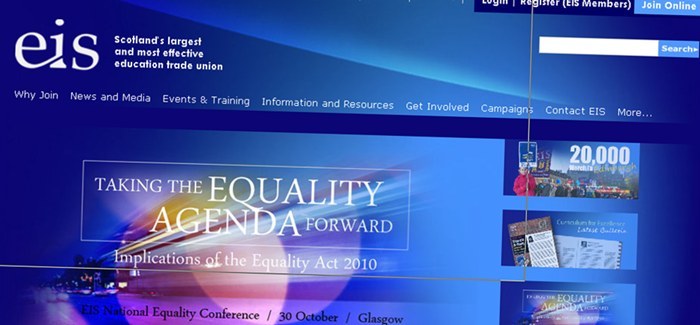Angus Council’s education convener has expressed doubts over the effectiveness of a campaign which Scotland’s largest teaching union hopes will help eradicate cyber-bullying of its members.
The Educational Institute of Scotland (EIS) wants websites which host offensive remarks by pupils against teachers to be accountable to the same defamation laws as newspapers.
The issue, which has become increasingly relevant in the wake of the rise of Facebook and Bebo, was thrust into the spotlight this week after an anonymous Scottish teacher found explicit, violent and sexual remarks made by pupils about her on the internet.
But Peter Nield, who has been a teacher for 18 years, believes that while the campaign is a good idea it may be difficult to implement.
He said, “I think this seems like a good idea, and not just for teachers, for any person who may find themselves subject to abuse on the internet. However, I’m not really sure how we can police this worldwide. If the remarks were made on an American website, for example, would the site still be accountable to our defamation laws?
“How can we even be sure a site is operating from where it says it is operating? I do think if someone makes a complaint about defamatory material on a site then the operator should be legally obliged to take it down but I think most sites already have fairly good complaints procedures in place.”
However, an EIS spokesman said that by the time offensive material appeared on the internet “the damage will already have been done.”AccountabilityHe added, “When a newspaper publishes an article or photograph, they are accountable for doing so. It is surely appropriate for internet sites, many of which are viewed by many millions of users, to be held to similar editorial standards.
“Schools are already taking sensible precautions to combat cyber-bullying, by steps such as limiting access to certain internet sites and by having strict policies on mobile phone and camera use during the school day, but schools cannot eliminate the scourge of bullying on their own.
“It will take a joint effort from the whole community, including the global community of the worldwide web, to tackle successfully online bullying. We cannot allow the lives of pupils and teachers to be damaged in the name of puerile entertainment.”
A council spokeswoman said the authority was not aware of any cyber-bullying involving teaching staff.
However, she added, “We have ongoing staff development opportunities on themes around bullying and cyber-bullying is a key element of this work. Although this policy and our work on anti-bullying tends to focus on pupils, the principles could equally apply to staff.
“If cyber-bullying is reported, matters are investigated, resolved and individuals supported. We treat all bullying very seriously.
“Angus Council has robust policies in place to deal with workplace bullying or threats of any nature towards its staff connected with their work.”
